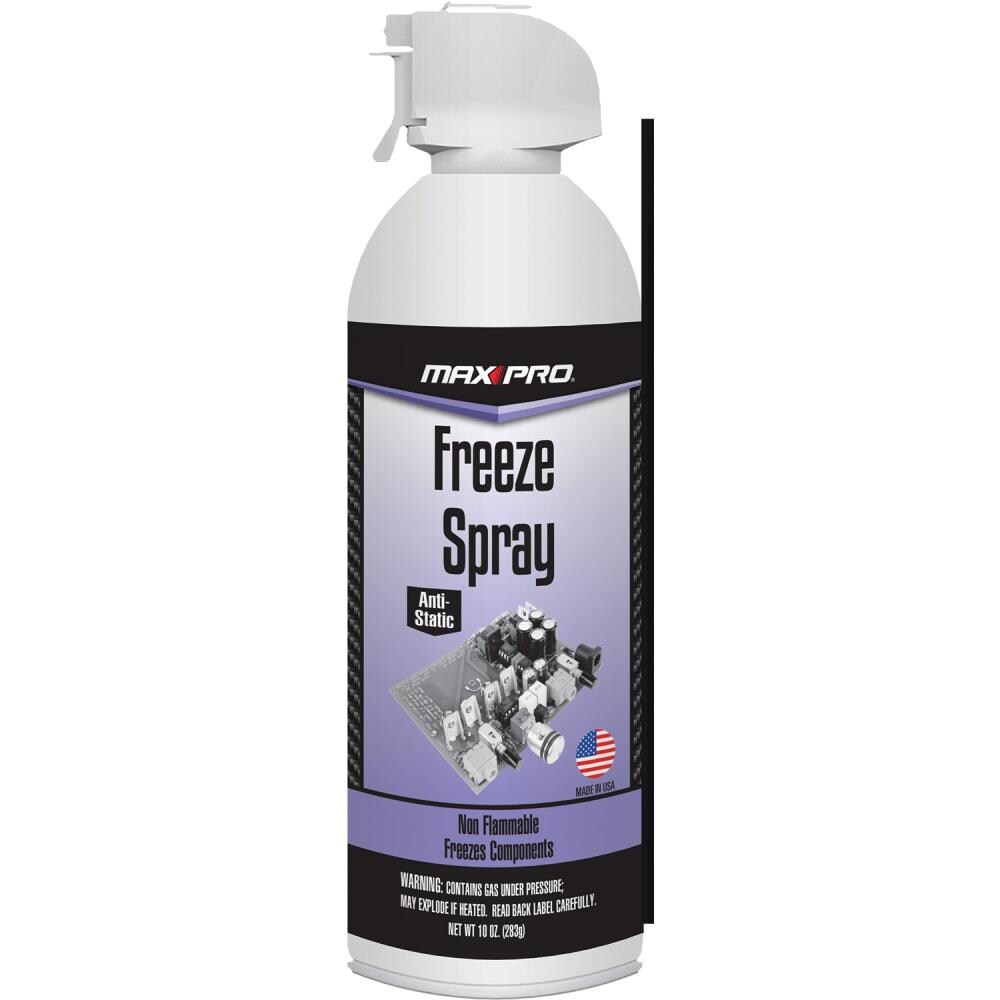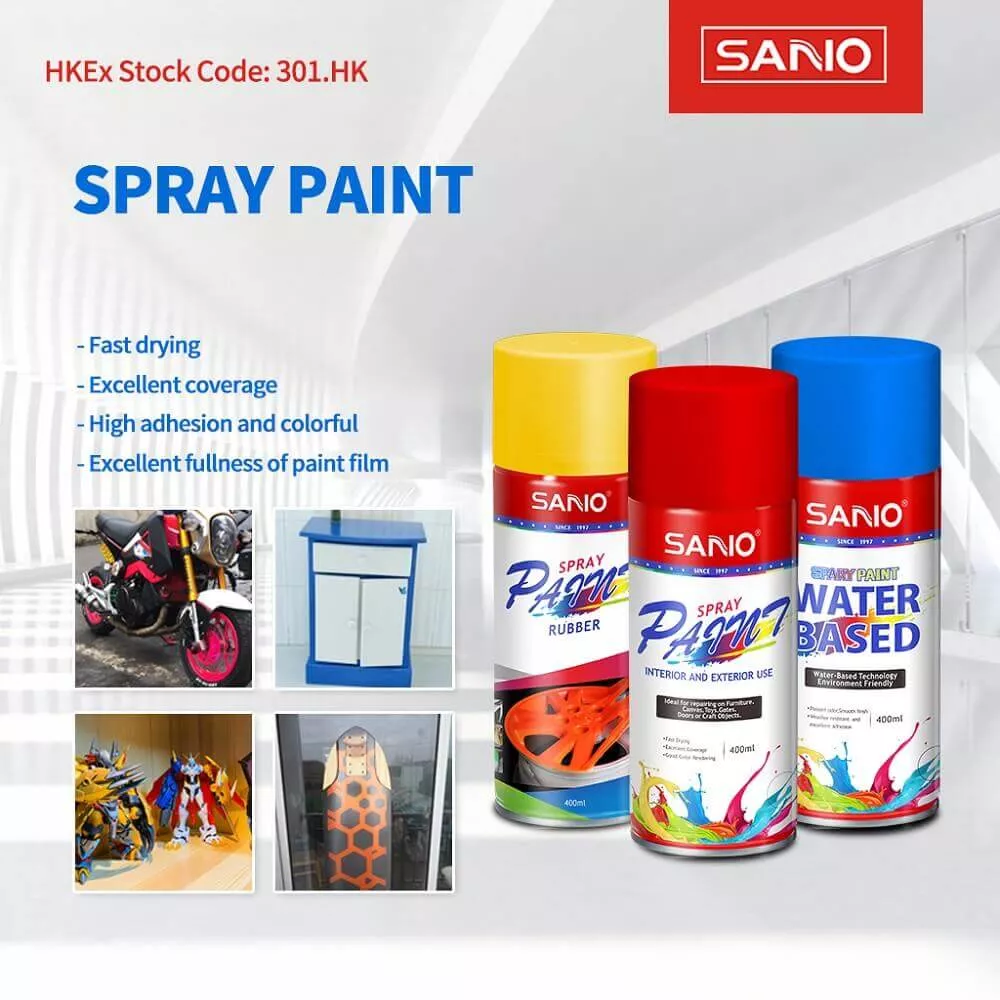Yes, spray paint can freeze and become unusable. Spray paint is a quick and easy way to add color or texture to various surfaces.
However, it is essential to store it properly to prevent it from freezing. Spray paint contains solvents that can freeze when exposed to low temperatures, causing the can to become unusable. If spray paint freezes, it can separate, clog the nozzle or even burst the can.
Therefore, it is best to store spray paint in a dry, cool place above freezing temperatures. In this blog post, we will discuss the effects of freezing on spray paint and provide tips on how to store spray paint to prevent it from freezing.
Contents
- Introduction To Spray Paint Composition
- Freezing Point Fundamentals
- Myths Surrounding Spray Paint Freezing
- The Science Of Spray Paint Under Cold Conditions
- Practical Implications Of Frozen Spray Paint
- Thawing Techniques For Frozen Spray Paint
- Preventive Measures To Protect Spray Paint
- Case Studies And Real-world Scenarios
- Future Of Spray Paint Formulations
- Frequently Asked Questions
- Conclusion
Introduction To Spray Paint Composition
Spray paint is a versatile tool used for various projects, from DIY crafts to professional applications. Understanding the composition of spray paint is crucial for achieving desired results. The combination of key ingredients, solvents, and propellants determines the quality and performance of the spray paint.
Key Ingredients In Spray Paint
Spray paint is composed of key ingredients that work together to create a smooth and durable finish. These ingredients include pigments, binders, and additives. The pigments provide color, the binders hold the pigments together, and additives enhance characteristics like drying time and durability.
The Role Of Solvents And Propellants
Solvents are essential components in spray paint that help dissolve the binders and pigments, allowing for smooth application. Propellants are responsible for expelling the paint from the can. Common propellants include butane and propane, which create pressure to push the paint out of the can.
Freezing Point Fundamentals
Discover the freezing point fundamentals of spray paint. Learn whether spray paint can freeze and how to prevent it. Master the art of storing spray paint in optimal conditions to avoid freezing.
Factors Affecting Freezing Point
Various factors influence the freezing point of spray paint.
Comparison With Water
Spray paint has a lower freezing point compared to water.
Spray paint freezing point can be affected by:- Chemical composition
- Can size and material
| Factors | Spray Paint | Water |
|---|---|---|
| Freezing Point | Varies | 0°C |
| Affected by | Chemical composition, container | N/A |
Myths Surrounding Spray Paint Freezing
Spray paint freezing is a common concern for many DIY enthusiasts and professional painters. There are several myths surrounding the impact of freezing temperatures on spray paint. In this section, we will debunk these misconceptions and explore the origin of these myths.
Common Misconceptions
Myth 1: Freezing temperatures cause spray paint to become unusable.
Myth 2: Once frozen, spray paint cannot be restored to its original consistency.
Myth 3: Freezing damages the quality and color vibrancy of spray paint.
Origin Of Myths
The misconceptions surrounding spray paint freezing often stem from misinformation about the chemical composition of aerosol paints. Additionally, anecdotal experiences of individuals encountering issues with frozen spray paint have contributed to the perpetuation of these myths. Lack of proper understanding of the characteristics of spray paint in cold conditions has also led to the development of these misconceptions.

Credit: www.lowes.com
The Science Of Spray Paint Under Cold Conditions
Spray paint is a versatile and convenient way to add color and texture to various surfaces. However, when temperatures drop, the behavior and performance of spray paint can be significantly impacted. Understanding the science behind how spray paint behaves in cold conditions can help users anticipate and mitigate potential issues. In this article, we will explore the fascinating world of spray paint under low temperatures and how its components undergo physical changes in such environments.
Behavior At Low Temperatures
Spray paint can freeze when exposed to low temperatures. When the temperature drops, the propellant in the canister may not exert enough pressure to force the paint out of the nozzle effectively. This can lead to uneven spray patterns and sputtering. Additionally, the paint itself can thicken, affecting its ability to adhere smoothly to surfaces. It’s essential to consider these factors when using spray paint in cold conditions to ensure optimal results.
Physical Changes In Components
The components of spray paint can undergo physical changes when exposed to cold temperatures. The paint itself may become more viscous, affecting its ability to flow evenly and adhere to surfaces. The propellant can also be affected, potentially leading to issues with the spray pattern and coverage. Understanding these physical changes can help users make informed decisions about when and how to use spray paint in cold weather.
Practical Implications Of Frozen Spray Paint
Freezing temperatures can have significant effects on spray paint. When spray paint freezes, it can lead to various practical implications that impact its usability and application.
Application Challenges
- Uneven spray patterns may occur due to changes in paint viscosity.
- Increased clogging of the nozzle can hinder smooth application.
- Color inconsistency might arise from altered paint composition.
Storage Recommendations
Proper storage of spray paint is crucial in preventing freezing. Consider these tips:
- Store in a temperature-controlled environment to avoid extreme cold.
- Keep cans in a dry place to prevent moisture buildup.
- Shake the can vigorously before use if it has been exposed to freezing temperatures.

Credit: www.sanvochemicals.com
Thawing Techniques For Frozen Spray Paint
Freezing temperatures can cause spray paint cans to freeze, making it difficult to use them. Fortunately, there are several effective ways to thaw frozen spray paint cans without damaging them. In this section, we will discuss safe thawing practices and what to avoid during the process.
Safe Thawing Practices
When it comes to thawing frozen spray paint, it is important to follow safe practices to prevent any accidents. Here are some tips:
- Move the frozen spray paint can to a warm and dry place
- Place the can in a bucket of warm water
- Rotate the can every few minutes to ensure even thawing
- Check the can for cracks or leaks before using it
What To Avoid During Thawing
While thawing frozen spray paint, there are certain things that you should avoid to prevent any damage to the can or any accidents. Here are some things to avoid:
- Do not use an open flame or any heat source to thaw the can
- Do not shake or puncture the can while it is still frozen
- Do not use the can if there are any cracks or leaks
By following these safe thawing practices and avoiding certain things during the process, you can effectively thaw your frozen spray paint and use it without any issues.
Preventive Measures To Protect Spray Paint
Spray paint is a versatile tool for adding color and finishing touches to a wide range of projects. However, exposure to extreme temperatures can impact its effectiveness. To ensure that your spray paint remains in optimal condition, it’s crucial to take preventive measures to protect it from freezing. By implementing the following strategies, you can safeguard your spray paint and maintain its quality.
Optimal Storage Conditions
Storing your spray paint in suitable conditions is essential for preventing freezing. Ensure that the storage area is maintained at a temperature above the freezing point, ideally between 50°F and 80°F. Avoid placing the cans in unheated spaces during the winter, such as garages or sheds, where temperatures can fluctuate dramatically. Instead, opt for a temperature-controlled environment to safeguard the integrity of the paint.
Using Additives
Another effective way to protect spray paint from freezing is by incorporating additives into the formula. Certain products, such as anti-freeze agents, can be mixed with the paint to lower its freezing point, thereby reducing the risk of damage due to cold temperatures. Follow the manufacturer’s guidelines when adding these substances to ensure that the paint remains stable and suitable for your intended application.

Credit: www.reddit.com
Case Studies And Real-world Scenarios
Professional Insights
Professional painters and contractors have encountered various challenges when using spray paint in different weather conditions. In colder climates, the risk of spray paint freezing becomes a major concern. Professionals often rely on their experience and expertise to navigate these situations, ensuring that the paint remains at the optimal temperature for application.
Diy Experiences
DIY enthusiasts have also shared their experiences with spray paint in freezing conditions. From home renovation projects to outdoor furniture restoration, individuals have encountered the impact of cold temperatures on spray paint performance. Their firsthand accounts provide valuable insights into the challenges and potential solutions for using spray paint in freezing weather.
Future Of Spray Paint Formulations
Spray paint is a popular medium for artists, DIY enthusiasts and commercial painters. It is easy to apply, dries quickly and comes in a wide range of colors. However, one of the biggest challenges for spray paint manufacturers is freeze resistance. When exposed to low temperatures, spray paint can freeze and become unusable. In this section, we will discuss the future of spray paint formulations, with a focus on innovations in freeze resistance and eco-friendly alternatives.
Innovations In Freeze Resistance
Spray paint manufacturers are constantly researching and developing new formulations to improve the freeze resistance of their products. One of the most promising innovations is the use of low-temperature-resistant solvents and propellants. These solvents and propellants have a lower freezing point than traditional formulations, allowing the spray paint to remain liquid even in extremely low temperatures.
Another innovation is the use of special coatings on the spray can that provide an additional layer of insulation against the cold. These coatings can help keep the spray paint from freezing, even in sub-zero temperatures. Some manufacturers are also experimenting with adding anti-freeze agents to their spray paint formulas, which can lower the freezing point of the paint and prevent it from solidifying.
Eco-friendly Alternatives
As concerns about the environment continue to grow, more and more consumers are looking for eco-friendly alternatives to traditional spray paint. One of the most promising options is water-based spray paint. Water-based spray paint uses water as the main solvent, rather than petroleum-based solvents. This makes it much less harmful to the environment, as it produces fewer VOCs (volatile organic compounds) and has a lower carbon footprint.
Another eco-friendly alternative is spray paint made from recycled materials. Some manufacturers are now using recycled plastics and metals to create their spray paint cans and formulations. This reduces the amount of waste produced by the spray paint industry and helps to conserve natural resources.
| Advantages of Eco-Friendly Spray Paint | Disadvantages of Eco-Friendly Spray Paint |
|---|---|
|
|
Overall, the future of spray paint formulations looks bright. With continued innovation in freeze resistance and the development of eco-friendly alternatives, spray paint will continue to be a popular and versatile medium for artists, DIY enthusiasts and commercial painters alike.
Frequently Asked Questions
Is It Bad If Spray Paint Freezes?
Yes, freezing can ruin the consistency of spray paint. It may affect its ability to adhere and perform well.
How Cold Is Too Cold For Spray Paint?
Spray paint works best above 50°F. Below that, it can dry unevenly or not at all.
Is It Okay For Aerosol Cans To Freeze?
Freezing aerosol cans can cause them to explode due to increased pressure. It is not safe.
Is Paint Ruined If It Freezes?
Yes, paint can be ruined if it freezes. Freezing can alter its consistency and ruin its properties, making it unusable.
Conclusion
It is important to consider the freezing point of spray paint in order to ensure its effectiveness and longevity. Freezing temperatures can adversely affect the consistency and application of spray paint, leading to potential damage or subpar results. By storing spray paint in a controlled environment and avoiding exposure to extreme cold, you can maintain its quality and achieve the desired outcomes for your projects.
Remember to always check the manufacturer’s instructions for specific recommendations on temperature storage.
